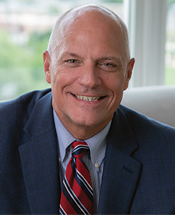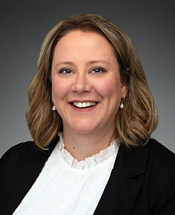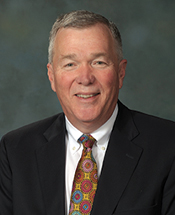 Conversations about how to address the workforce crisis in post-acute and long term care have increased in recent years. With the finalization of the Nursing Home Minimum Staffing Rule in April 2024, these conversations have taken on a new urgency. One potentially promising solution comes up again and again: immigration. Many communities are already bringing in nurses and other workers from various countries, and they agree that it’s one solution that deserves greater attention now.
Conversations about how to address the workforce crisis in post-acute and long term care have increased in recent years. With the finalization of the Nursing Home Minimum Staffing Rule in April 2024, these conversations have taken on a new urgency. One potentially promising solution comes up again and again: immigration. Many communities are already bringing in nurses and other workers from various countries, and they agree that it’s one solution that deserves greater attention now.
In 2021, there were nearly 2.8 million immigrants, representing nearly a fifth of people working in health care in the U.S.1 With the older population growing rapidly and the demand for practitioners, caregivers, and other workers at an all-time high, long term and post-acute care (LTPAC) communities are finding that engaging capable individuals from abroad has the potential to ease some of the staffing pains.
The stories are powerful, not only in terms of how they enhance resident care and fill staffing gaps but also in how these immigrants integrate into their communities and become part of teams and families.
Attracting Needed Nurses
 As part of a joint venture with Chicago Methodist, Jay Biere, chief executive officer (CEO) of Plymouth Place, has been able to bring in nurses from the Philippines. There is a recruitment office in Manila, and Chicago Methodist has a point person there who interviews nurses who are interested in coming to the U.S. All candidates have a minimum of a bachelor’s degree, and many have a master’s degree as well. They are vetted in Manila, then arrangements are made for those who are chosen to come to the U.S., where they participate in an orientation program. Then they are sent to various organizations, such as Plymouth Place. “It’s a nice win-win,” said Biere. While there is some additional training required, most already speak English and have key nursing skills.
As part of a joint venture with Chicago Methodist, Jay Biere, chief executive officer (CEO) of Plymouth Place, has been able to bring in nurses from the Philippines. There is a recruitment office in Manila, and Chicago Methodist has a point person there who interviews nurses who are interested in coming to the U.S. All candidates have a minimum of a bachelor’s degree, and many have a master’s degree as well. They are vetted in Manila, then arrangements are made for those who are chosen to come to the U.S., where they participate in an orientation program. Then they are sent to various organizations, such as Plymouth Place. “It’s a nice win-win,” said Biere. While there is some additional training required, most already speak English and have key nursing skills.
The nurses come with a three-year contract. “They have the option of going back to the Philippines at the end of their contract, but we want them to have a positive experience so they are encouraged to stay,” Biere said. He stressed the importance of helping them get adjusted to their new life, including showing them where to get groceries, how to file taxes and pay bills, and how to use public transportation.
There are many success stories. For instance, it took one nurse four years to get here from the Philippines, but she was tremendously glad to finally arrive. She went from making $400 per month in her native country to several thousand dollars at Plymouth Place. She and others like her can send money to help support parents and grandparents. Biere spoke about another nurse, a “standout who really shined and has real passion for other people.” He said, “We ended up promoting her to a supervisory position, and she has been a great asset.”
As for residents and other staff, Biere said that they have been very welcoming to the newcomers. Staff, he said, go out of their way to help people get adjusted, and they are grateful to have skilled team members. He said, “Not a month goes by that I don’t hear from someone saying that they or a loved one was in my facility and those nurses from overseas were so wonderful.” At the same time, he said, the nurses they bring in “tell us that this opportunity has been so important because they could support their families. It's very moving and touching. We’re paying it forward and making a difference in people's lives.”
 DeeAndra Sandgren, chief nursing officer at Good Samaritan Society, said that staff generally are grateful for the help and the opportunity to have new colleagues who share their passion for resident care. The residents also are welcoming, and Sandgren talked about one nurse who is from Kenya. “The residents wanted to learn more about her culture, so she brought in some native garb and other items. We now have a cultural fair to celebrate different cultures,” she said. She added that having a culturally diverse staff also sends a message to potential workers and residents alike that the organization is welcoming people from different countries and cultures.
DeeAndra Sandgren, chief nursing officer at Good Samaritan Society, said that staff generally are grateful for the help and the opportunity to have new colleagues who share their passion for resident care. The residents also are welcoming, and Sandgren talked about one nurse who is from Kenya. “The residents wanted to learn more about her culture, so she brought in some native garb and other items. We now have a cultural fair to celebrate different cultures,” she said. She added that having a culturally diverse staff also sends a message to potential workers and residents alike that the organization is welcoming people from different countries and cultures.
Overall, their efforts have been so successful that Biere is now looking at recruiting certified nurse aides (CNAs) from Ghana and Liberia. “We chose those two countries because their governments are open to working with us, and they speak English already,” he said, adding “Finding a good CNA can be just as challenging as finding nurses, so we are optimistic about this opportunity.” He noted that his facility has its own CNA school accredited by the Illinois Department of Public Health, so they can put candidates through school while they work in a support service role until they graduate.
Creating New Americans
Ted Goins, Jr., president and CEO of Lutheran Services Carolinas, is in a unique position as a long term care organization and as a North and South Carolina refugee and immigration organization. One solution to his workforce needs is marrying long term care and refugees. He said, “We call our program the ‘New American Program’ because we are truly creating new Americans.” When they meet these individuals at the airport, he said, they know they are vetted and approved to work in the U.S.
However, Goins stressed that people don’t go from the airport to the workplace immediately. He said, “We help get their kids registered at school, and we start them working with a job coach and get them in English as a second language classes as needed.” The goal, he said, is self-sufficiency in six months. This is a lofty aim, he admitted, but Goins and his team make the most of the time they have and focus on the areas where each person needs the most support.
While a command of English is particularly important for people who interact with residents, it’s still possible to hire people into maintenance, housekeeping, or other positions to strengthen their language skills. Goins said, “We have a refugee here in one facility who is employed in maintenance and uses Google Translate to help communicate. He is learning English, and he’s been a great addition to the staff.” When nurses and other caregivers come over with their spouses, these individuals often can be employed in other facility roles.
The whole process works best, said Sandgren, when “we work intentionally to make these newcomers part of the fabric of the community.” She suggested, “They are really just like anyone else who moves to town. They want to get their kids in school, make friends, and become part of the community.” She noted that her organization takes the time to help internationally trained nurses understand the unique aspects of American health care and how the system and clinical processes work in this country. They also provide opportunities for these nurses to share experiences with each other, as well as tips for things like where to find cultural support in the community.
Providing people with the necessary support can help them adjust to even extreme changes. For instance, Sandgren noted that they have nurses from the Philippines who came here in the dead of winter. They made sure they had winter coats and clothes and could comfortably adjust to the cold weather.
Getting Started: One Is a Lonely Number
One point is clear when it comes to bringing immigrants into your organization or communities: you can’t do it on your own. “We have seven refugee resettlement offices around the Carolinas, so it’s made us more aware of immigration opportunities and how to work with them,” said Goins.

Sandgren said, “We work through a staffing agency who helps us manage the process, recruit candidates, and set up interviews. We share information about what jobs we have available, and they handle most of the overseas recruiting work.” There’s a tremendous amount of work that goes into this, she stressed, so it is important not to assume this will be an “instant or quick solution.” It can take up to two years or more before facilities see their new worker.
Goins concurred that even with the right connections, it’s not a quick process. “It takes some time to get all the paperwork in place,” he said. Instead of trying to do this on your own, Goins suggested, “Reach out to your local immigration and refugee services and office. This should be easy to find with a simple Google search. However, if that doesn’t pan out, there are national organizations such as Global Refugee, formerly Lutheran Immigration and Refugee Services.”
“It’s so important to have a partner who is knowledgeable about immigration, someone who can help manage all the moving parts. You need someone who can walk you through all the steps and help make sure nothing falls through the cracks,” Biere said. He also said that he would be happy to talk to anyone who wants to bring in nurses or other workers from other countries. “I’m more than happy to help others succeed in this.”
Of course, there is a financial investment that goes behind filing paperwork, hiring attorneys, etc. “You should be prepared to pay for some things like housing and transportation, at least initially.” Goins admitted, “A few years ago, I wouldn’t even have considered this because it is involved and expensive. However, desperate times call for desperate measures. And it truly has been worth the investment of time and money.”
Biere noted, “It’s a pretty intensive program to get them from point A to B, and it costs several thousand dollars.”
One Answer, But Not Without Challenges
Goins suggested that providers should advocate for reasonable immigration reform to enable more people to come to the U.S. to fill needed roles in health care.
The year before COVID-19 hit, Goins said, “We started working for a company out of Puerto Rico to bring new nurses who had not yet passed their exams to the mainland.” This was a simplified process because they are already U.S. citizens. “We ended up getting about 30 nurses, and they really helped fill the gap when things were tough,” he said. However, as with so many things, that pipeline was lost during the pandemic.
Goins said, “Somebody told me that you have a better chance of getting struck by lightning than getting permission to come to the United States as a refugee. The number the U.S. allows in is small when you consider the millions of refugees around the world who need a home.” The need for workers and practitioners in senior and long term care is real, he stressed, and immigrants with appropriate experience and/or motivation present one important opportunity to address a workforce crisis that isn’t going away any time soon.
Sandgren agreed, but she stressed that they continue to work with local talent pipelines, including local universities and technical schools, as part of their comprehensive workforce strategies. However, she said, “It’s fairly obvious that with the nursing shortage in the U.S., we aren’t going to be able to fix that without looking to recruit internationally trained nurses.”
Read more: Advocating for Change
Joanne Kaldy is a freelance writer and communications consultant based in New Orleans.
References
1. https://www.migrationpolicy.org/article/immigrant-health-care-workers-united-states